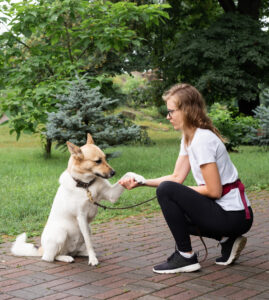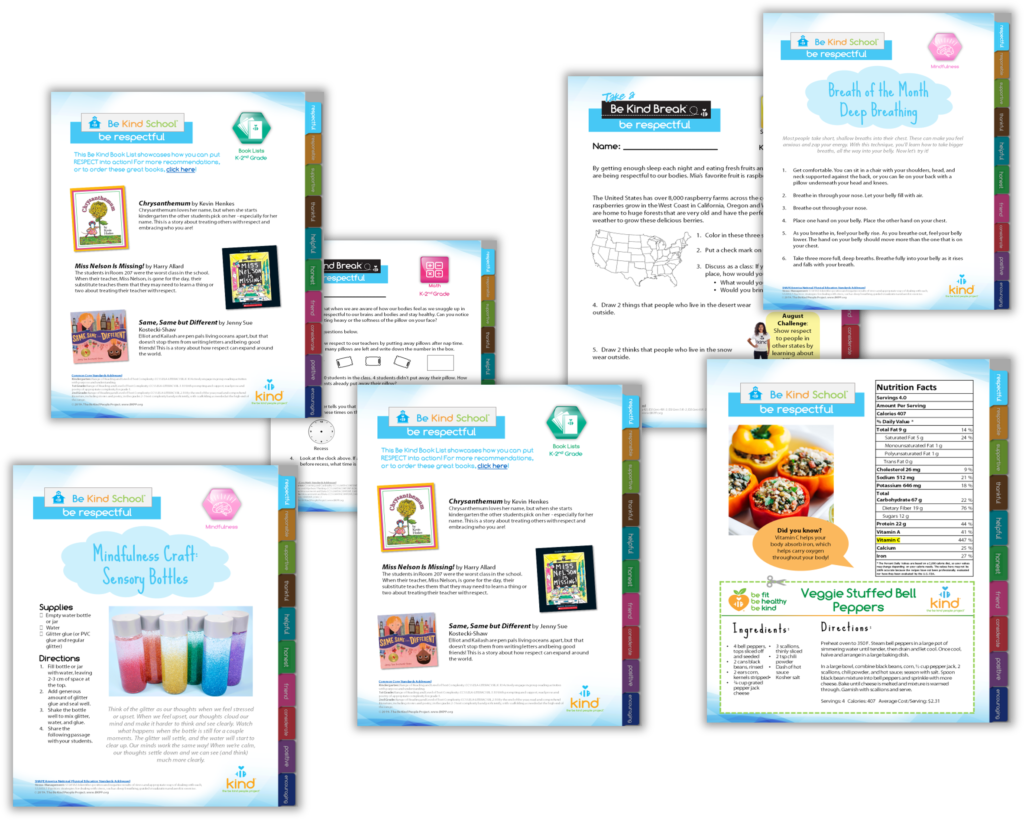- About
- Programs
- After School Classes
- All-School Assemblies
- The BE KIND Business
- The BE KIND Community Education Center
- The BE KIND SCHOOL
- BE KIND on the MOVE
- Classroom Resources
- #CyberSkills
- Family Engagement
- Fitness Programs
- Gardens
- Grace’s Group
- Health & Wellness
- Summer Programs
- Teacher Training
- Wellness Wednesday
- Athletes for Arizona
- Events
- Get Involved
- Donate
Pet Companionship and Health
- Home
- Wellness Wednesday
- Emotional Wellness
- Pet Companionship and Health
Unleash the Love
Pets as Partners in Health and Happiness

Did you know that having a pet is a healthy habit? Pets encourage exercise, time outside, and socialization. Today we’re sharing essential tips to encourage the health of you and your pet. Having a healthy, happy, and obedient pet creates a rewarding relationship. Whether you’re a seasoned pet parent or embarking on the exciting journey of training a new furry friend, we’ve got you covered with insights that’ll make tails wag and hearts swell. Here’s to love, learning, and lots of wagging tails!
Companionship and Health
It’s no secret the companionship of a pet positively influences our health, impacting emotional, social, and physical aspects of our well-being. The Animal Health Foundation states that the bond between humans and their pets is a unique and powerful relationship that contributes significantly to a healthier and happier life.

- Emotional Support: Pets provide unconditional love and companionship, helping to reduce feelings of loneliness and depression. The presence of a furry friend can be a source of comfort during challenging times.
- Stress Reduction: Interacting with pets has been shown to lower cortisol levels (a stress hormone) and reduce overall stress. Petting or playing with a pet triggers the release of endorphins, promoting a sense of calm and relaxation.
- Physical Activity: Dog ownership, in particular, encourages regular physical exercise through activities such as walking, running, or playing fetch. This not only benefits the pet’s health but also helps owners maintain an active lifestyle, reducing the risk of obesity and related health issues.
- Heart Health: Studies suggest that having a pet can be associated with a lower risk of heart disease. The calming effect of petting an animal and the increased physical activity associated with pet ownership contribute to cardiovascular health.
- Social Interaction: Pet ownership often facilitates social interactions. Whether at a dog park or on a neighborhood walk, pets provide opportunities for owners to connect with others, fostering a sense of community and reducing feelings of isolation.
- Routine and Structure: Caring for a pet establishes a daily routine, which can be especially beneficial for individuals who thrive on structure. This routine can contribute to a sense of purpose and responsibility.
- Mood Enhancement: The presence of pets has been linked to the release of oxytocin, a hormone associated with bonding and affection. This can lead to an improved mood and a greater sense of happiness.
- Reduced Allergies: Contrary to common belief, growing up with pets may reduce children’s risk of developing allergies and asthma. Exposure to pet dander and microbes from an early age can strengthen the immune system.
Tips to Develop Healthy, Happy, and Obedient Pets
Remember, every dog is unique, and it’s important to tailor your training approach to their individual personality and learning style. Learn more with The American Kennel Club.
Basic Commands:
- Consistency is Key: Use the same commands and gestures consistently. Dogs thrive on routine and repetition.
- Positive Reinforcement: Reward good behavior immediately with treats, praise, or play. Positive reinforcement creates a positive association with the desired action.
- Short and Sweet Sessions: Keep training sessions short and focused, especially for puppies. Aim for 5-10 minutes and end on a positive note.
- Patience is a Virtue: Dogs learn at their own pace. Be patient and celebrate small victories to build confidence.
- Use Distraction-Free Environments: Begin training in quiet areas to minimize distractions. As your dog progresses, gradually introduce more challenging environments.

Advanced Skills:
- Build on Basics: Advanced skills are often built on basic commands. Ensure your dog has a solid foundation before moving on to more complex tasks.
- Raise the Bar Gradually: Increase the difficulty of commands gradually. For example, add distractions, increase distance, or incorporate new elements to challenge your dog.
- Keep it Fun: Advanced training should be enjoyable for you and your dog. Incorporate play into sessions to maintain a positive atmosphere.
- Vary Rewards: Mix up rewards to keep your dog engaged. Use a combination of treats, praise, and toys to maintain motivation.
- Master One Skill at a Time: Focus on mastering one advanced skill before moving on to the next. This approach prevents confusion and ensures a strong understanding of each command.
- Consolidate Learning with Regular Practice: Regular practice is crucial for mastering advanced skills. Consistency in training will reinforce your dog’s understanding of complex commands.
Pet Health and Safety – The Big 5
Dogs and pets especially are family! As you would yourself and your children, ensuring your dog’s safety is paramount. Spot Pet Insurance wants all of us to know understanding your pet’s behaviors and needs is essential for maintaining a safe environment to maintain their long lifespan. Regular veterinary check-ups also contribute to overall dog safety and well-being.
- Proper Identification:
- Ensure your dog wears a collar with an ID tag containing your contact information. This is crucial in case your dog gets lost.
- Consider getting your pet microchipped for an added identification layer, as collars can come off.
- Supervise Interactions:
- Always supervise your dog when interacting with other animals, especially unfamiliar ones. Not all dogs have the same temperament, and preventing potential conflicts is essential.
- Supervise children around dogs, teaching them how to interact gently and respect the dog’s space.
- Secure Fencing and Leash Use:
- Maintain secure fencing around your yard to prevent your dog from wandering off or encountering potentially dangerous situations.
- Use a leash in public areas to ensure your dog stays close and safe. Retractable leashes can pose risks, so opt for a standard leash in busy areas.
- Be Mindful of Temperature:
- Avoid leaving your dog in a car, especially during hot or cold weather. Temperatures can become extreme inside a vehicle, leading to heatstroke or hypothermia.
- Be cautious of hot pavement in the summer, as it can burn your dog’s paw pads. Walk your dog early or late in the evening to avoid the heat.
- Safe and Healthy Environment:
- Remove hazards from your home and yard, such as toxic plants, small objects that could be swallowed, and electrical cords.
- Keep human food, medications, and cleaning products out of reach to prevent accidental ingestion.
- Regularly inspect your dog’s toys for signs of wear or damage that could pose a choking hazard.
As we celebrate the joys of pet companionship, let’s continue to learn, grow, and revel in the unique connection we share with our four-legged friends. May the lessons learned here pave the way for countless adventures, laughter-filled days, and a lifetime of tail-wagging happiness.
Here’s to the paws that imprint on our hearts and the journey of love and companionship that makes every day brighter. Happy training, happy tails, and a lifetime of shared happiness with your furry friends!
Published on January 31, 2024
Questions? Comments? Want to contribute to the Wellness Wednesday Blog?
Send your ideas to info@bkpp.org.

Learn More about The Be Kind People Project®
- Programs
- After School Classes
- All-School Assemblies
- The BE KIND Academy
- The BE KIND Business
- The Be Kind Break
- The BE KIND School
- The BE KIND on the MOVE
- #CyberSkills
- Family Engagement
- Fitness Programs
- Gardens
- Grace’s Group
- Health & Wellness
- Summer Programs
- Teacher Training
- Wellness Wednesday
- Athletes for Arizona
Copyright © The Be Kind People Project | Privacy Policy

